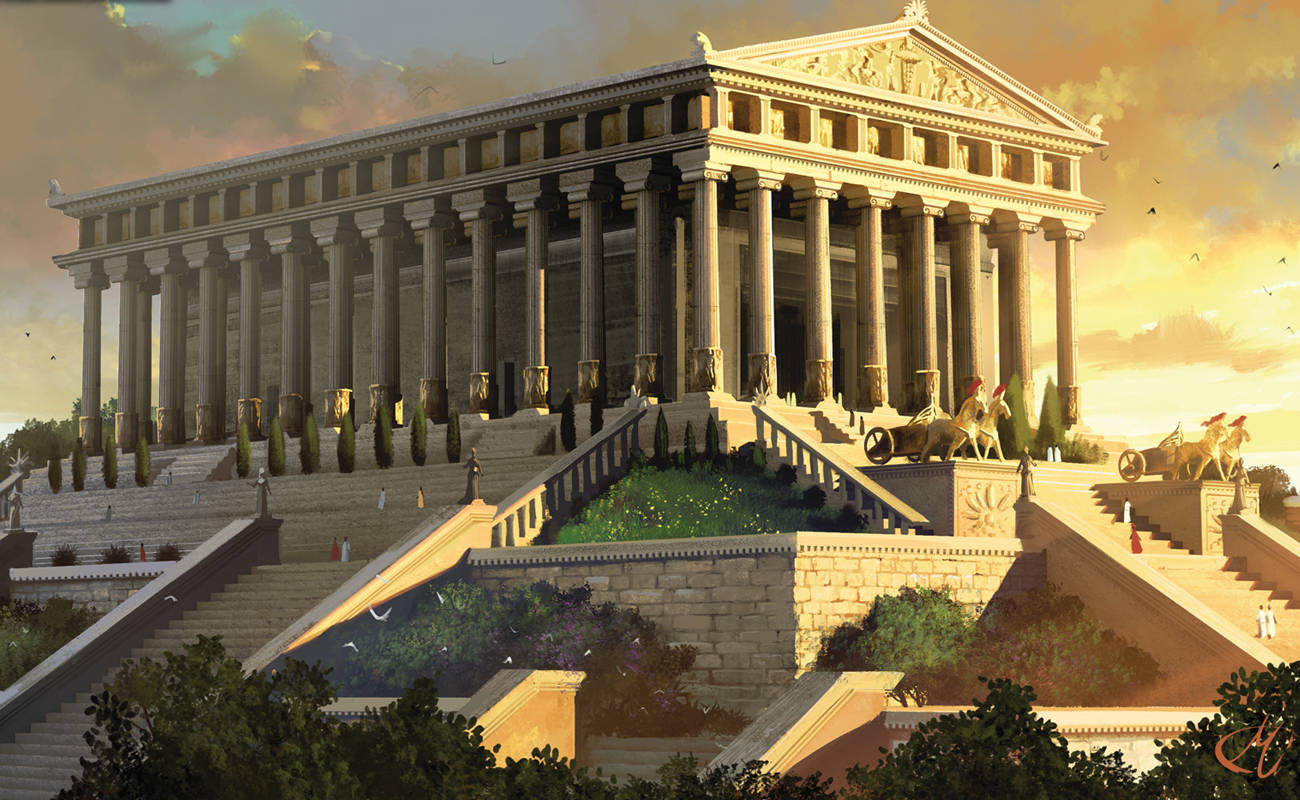
The Seven Wonders of the Ancient World
The Seven Wonders of the Ancient World were a list of remarkable constructions of classical antiquity. These extraordinary feats of architecture, engineering, and artistry were celebrated for their grandeur and significance in the ancient world. While only one of the original wonders still stands today, their historical and cultural significance endures.
1. The Great Pyramid of Giza
Pyramids of Egypt
The Great Pyramid of Giza, also known as the Pyramid of Khufu or Cheops, is the only surviving wonder of the ancient world. Built during the Fourth Dynasty of the Old Kingdom of Egypt, around 2560 BC, it served as a tomb for Pharaoh Khufu. The pyramid’s precision construction and massive scale have fascinated scholars and visitors for millennia.
2. The Hanging Gardens of Babylon
Babylon, near present-day Hillah, Babil Province, Iraq
The Hanging Gardens of Babylon were an extraordinary terraced garden with lush plants and trees. They were believed to have been built by King Nebuchadnezzar II for his wife, Amytis of Media, who missed the green hills of her homeland. While their existence is debated among historians, the gardens were described in ancient texts and were renowned for their beauty.
3. The Statue of Zeus at Olympia
Olympia, Greece
The Statue of Zeus at Olympia was a colossal statue of the Greek god Zeus, created by the renowned sculptor Phidias. The statue stood in the Temple of Zeus in Olympia and was made of ivory and gold-plated bronze. It was considered one of the greatest works of ancient Greek sculpture, depicting Zeus seated on a magnificent throne.
4. The Temple of Artemis at Ephesus
Ephesus, present-day Selçuk, Turkey
The Temple of Artemis was an enormous Greek temple dedicated to the goddess Artemis, constructed in the ancient city of Ephesus. It was renowned for its stunning architecture and large size, featuring 127 columns. The temple was destroyed and rebuilt multiple times throughout history and eventually disappeared.
5. The Mausoleum at Halicarnassus
Halicarnassus, present-day Bodrum, Turkey
The Mausoleum at Halicarnassus was a grand tomb built for Mausolus, the ruler of Caria, and his wife Artemisia. The tomb was designed by Greek architects and is considered one of the earliest examples of classical Greek architecture. It featured intricate sculptural decorations and was the source of the term “mausoleum” for grand tombs.
6. The Colossus of Rhodes
Rhodes, Greece
The Colossus of Rhodes was a colossal bronze statue of the sun god Helios, erected at the entrance of the harbor of Rhodes. It was created to commemorate the successful defense of the island against a siege. The statue, one of the tallest of the ancient world, stood for a relatively short period before being toppled by an earthquake.
7. The Lighthouse of Alexandria
Alexandria, Egypt
The Lighthouse of Alexandria, also known as the Pharos of Alexandria, was a marvel of ancient engineering. It was a tall, three-tiered lighthouse located on the island of Pharos, guiding ships into the busy port of Alexandria. Its sophisticated design included a mirror to reflect sunlight during the day and a fire at night. It is considered one of the tallest man-made structures of the ancient world.
While these wonders have largely disappeared over time, their legacy lives on through historical accounts, artistic representations, and the enduring fascination they continue to inspire. They serve as a testament to the ingenuity, creativity, and ambition of ancient civilizations and continue to capture the imagination of people around the world.
